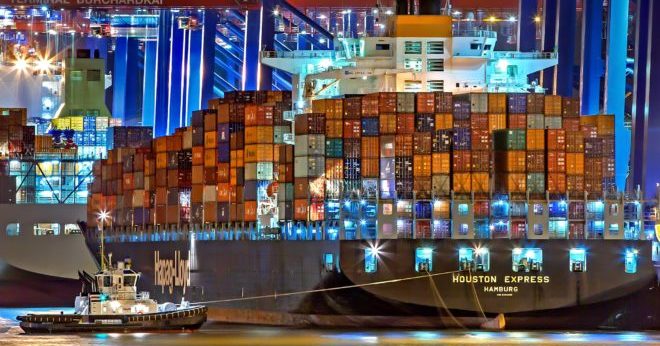Originally published in Supply Chain Brain
By Ashik Karim
The COVID-19 crisis has changed so much about daily life. That’s as true in logistics as anywhere else, which, because of the virus, has experienced the loss of a very specific industry mainstay: the late excuse.
Think of the following scenario, which would have been normal as recently as February. An Ohio manufacturer calls at 11 a.m., needing a load of parts delivered by 5:00 the next morning. A broker or forwarder contracts a truck for the four-hour trip.
The shipment tracks on time through the night, with the trucker last reporting at 60 miles out. But 5 a.m. comes. There’s no load in sight. The truck is still reporting as 60 miles out — though it’s actually 120.
Then come the excuses. There was a breakdown. The driver exhausted his electronic logging device (ELD) hours.
The truth is that someone, perhaps hoping to goose end-of-the-month revenue, accepted a shipment knowing it wouldn’t arrive on time. While such deception may have passed two months ago, those days are over. The coronavirus has changed everything.
The outbreak is throwing shipping into disarray. Manufacturers can’t get parts, raw materials, or enough people to staff lines. Older truckers are choosing to sit the virus out, believing income doesn’t trump the possibility of death. For those still working, deadheads are leading to longer, less efficient and less profitable routes. Throw in the surge demand from panic buying, and even planning hour to hour has become a herculean task.
In March, late loads jumped 24% due to extended dwell times, according to FourKites. Reentry delays rose 36%. Unachievable appointment times were at 18%.
Everyone from manufacturers to retailers is being forced to make real-time adjustments to keep lines moving and shelves stocked. In the days to come, they’ll need honest information to make that happen. And that means the supply chain will require transparency like it’s never had before.
Breaking Point
Though spikes in demand for food initially placed huge pressure on the supply chain, a dearth of goods is about to assert stress of a different kind.
The Port of Los Angeles, for example, saw its March cargo drop by 30%, the largest plunge in a decade. It’s also been forced to alter its second shift to make time for disinfecting equipment. Volumes everywhere are being reported at below pre-crisis level, with no floor in sight.
It all points to incredibly trying times for manufacturers. They may not have certain raw materials. They may be waiting for a supplier struggling to reopen. That means once-smooth operations have transformed into day-to-day pivots to produce what they can and when they can, with a desperate need to know whether tomorrow will call for an eight-hour shift or a six-hour one. With most everyone losing business, no one can afford to pay workers to stand idle.
These days, counting on precise arrivals is a matter of survival.
The same goes for retailers, particularly grocers, the one industry still close to full operation. More than half of all U.S. produce comes from abroad, from countries like Chile and Mexico that are less equipped to handle the outbreak. The result: fewer fruits and vegetables taking longer to get here.
If a load of grapes goes bad, a grocer in Buffalo needs to know while the truck is still in Kentucky, rather than finding out when it hits its loading dock. Being able to immediately schedule a new load could be the difference between a produce aisle sitting empty for days instead of hours.
Driver Shortage
Seventy percent of U.S. consumer goods are moved by truck. But those driving have an average age of 55, according to the Bureau of Labor Statistics, leaving about half in the most vulnerable category for COVID-19. Many have decided to sit the virus out.
Some are financially independent enough to wait for better times. Others have spouses and children at home, and are choosing not to risk their family’s future.
Even before the coronavirus hit full roar, an industry largely composed of small companies and owner-operators was experiencing a string of closures. Now, with a shortage of goods to move, and a scarcity of people to move them, shipping is in full upheaval. Those still on the job are facing more time on the road for less money.
With each new mile, stop or change of plans, a greater degree of delay is baked into the supply chain.
Providing Accountability
Error has always been part of shipping. Yet with availability tightening and COVID-19 throwing every part of the chain into disarray, it’s now increasing exponentially.
End clients understand this. Their businesses are facing the same tumult, and are likely to realize that non-stop adjustment is the order of the day.
But with their very survival at stake, they’re also far less likely to suffer flimsy excuses. Clients are getting smarter. They know that technology can track a load to its precise location. While they’ll likely to be amenable to changing plans on the front end — say, moving a shipment from one day to two — there will be repercussions if they’re repeatedly told that something’s on schedule, only to find out otherwise when it’s supposed to be at the loading dock.
No one can be certain how this crisis will shake out. What’s certain is that those providing full visibility — and accountability — are likely to be around when it’s over. Those who cling to the old excuses will not.
Ashik Karim is the CEO of LiteLink Technologies.

